The LA riots are awful to see – but they aren’t the first
The current events in Los Angeles are not the first time angry crowds have stormed the streets, so let’s look at the history of riots in the US, Britain and Australia to gain a better understanding of how and why they happen

READING LEVEL: RED
After a weekend of riots in Los Angeles, US Marines would now be deployed, it was reported early Tuesday (AEST). The 700-strong presence would support police efforts, with the deployment confirmed by both the military itself and US Defence Secretary Pete Hegseth.
“Due to increased threats to federal law enforcement officers and federal buildings, approximately 700 active-duty US Marines from Camp Pendleton are being deployed to Los Angeles to restore order,” Mr Hegseth said.
“We have an obligation to defend federal law enforcement officers - even if Gavin Newsom will not.”
But California Governor Mr Newsom and Los Angeles Mayor Karen Bass, both Democrats, have accused US President Donald Trump of deliberately making the situation worse by unlawfully sending in the National Guard* without state support. The Governor has demanded that the order be rescinded*.

Speaking to the media yesterday, the Los Angeles Police Department Chief Jim McDonnell said that the National Guard had not been deployed through the normal process, and that no one had requested their presence, but said his department was being “overwhelmed” by the number of protesters.
Demonstrators are protesting the Trump administration’s attempts to deport migrants from California en masse* without following parts of the legal process. Agents of the enforcement agency ICE* have, for instance, been seizing people without warrants*. Confrontations began last Friday local time, when dozens of protesters gathered outside a federal detention centre calling for the release of more than 40 people arrested across LA as part of Mr Trump’s mass deportation campaign.
Mr Trump said in a social media post on Monday that Los Angeles had been “invaded and occupied by illegal aliens and criminals”.
The protests in recent days have included acts of violence towards law enforcement, mostly involving members of the public pelting police with projectiles*. There have also been images of vehicles being set alight.
(Additional reporting by Samuel Clench, Benedict Brook and Megan Palin)
LA RIOTS
The Rodney King riots saw a major outbreak of violence, looting and arson* in LA that began on April 29, 1992. The riots began after four white Los Angeles policemen were acquitted* on all but one charge connected with the severe beating of African American motorist Rodney King in March 1991. Video of the assault came at a time of great tension, with police accused of racial profiling and brutality against African American and Hispanic communities. The now infamous footage ignited a huge outpouring of anger and several days of rioting.
More than 50 people were killed, more than 2300 were injured and thousands were arrested. About 1100 buildings were damaged, and total property damage was about $1 billion, which made the riots one of the most devastating civil disruptions in America's history.
UK RIOTS - AUGUST 2024
Riots in the UK are the worst in 13 years – but they aren’t the first
You may have seen on recent news and social media feeds that riots have been flaring across several UK cities for more than a week. The latest of these happened last weekend, when hotels housing asylum seekers* were set on fire by angry mobs.
Riots have touched just about every continent on Earth – and they seem to have increased in recent years.
Data collected by the 2020 Global Peace Index shows the number of riots, along with global protests and strikes, almost doubled between 2011 and 2018
But what is a riot, and how and why do they occur?
WHAT IS A RIOT?
A riot is considered a violent, unlawful meeting of a group of people intended to disrupt public peace. Rioters often become violent towards police and damage public property by throwing items at buildings and cars and sometimes even starting fires.
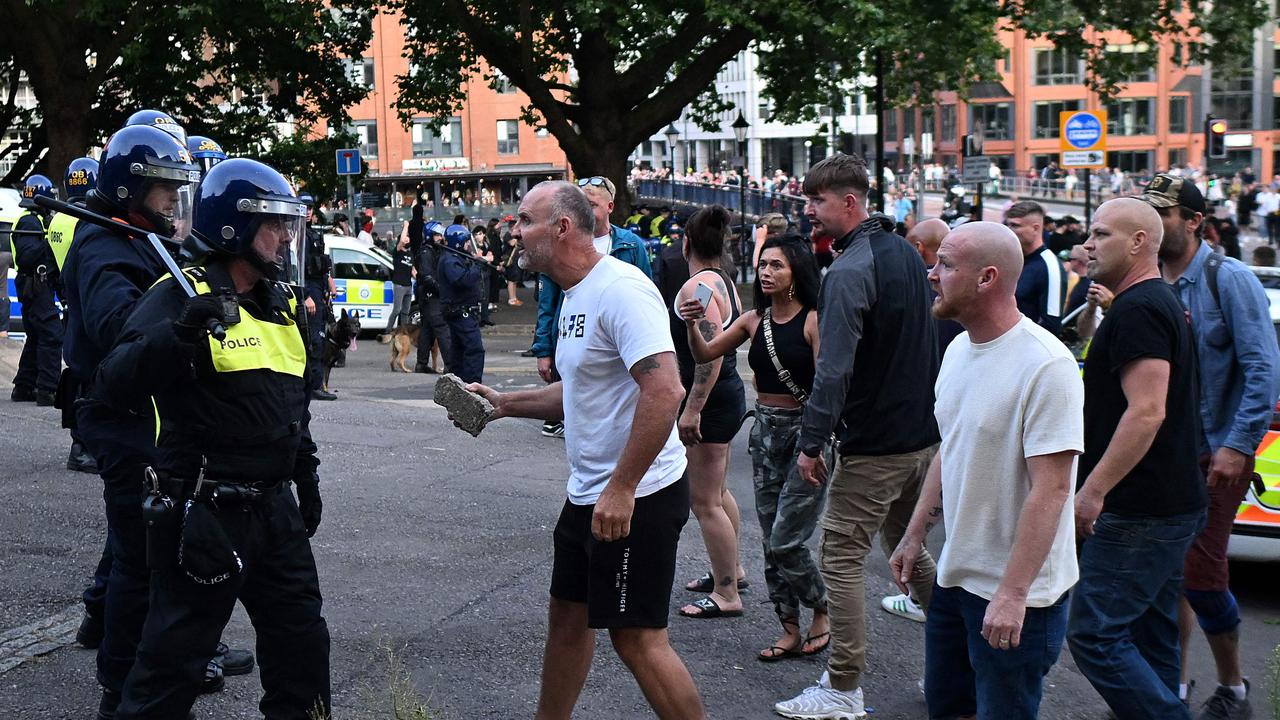
HOW DO RIOTS START?
Riots can start when there is a widespread sense of the people involved feeling disenfranchised* and alienated. Sometimes a “trigger event*” spurs those feeling disaffected* and angry to take action and group together in aggravated* or violent protest.
THE ROLE OF MISINFORMATION IN THE DIGITAL AGE
In recent years, misinformation* spread on social media platforms has been responsible for triggering a number of riots.
Described as the worst rioting in 13 years, the violent riots currently gripping the UK started after a 17-year-old male attacked a kids’ dance class in Southport. Three children died and 10 people were injured.
The riots were fuelled by misinformation from the beginning. False rumours were spread online about the identity of the attacker, calling him a Muslim asylum-seeker, despite his actually having been born and raised in Britain.
This latest outbreak is one of several that have rocked the UK over the years.
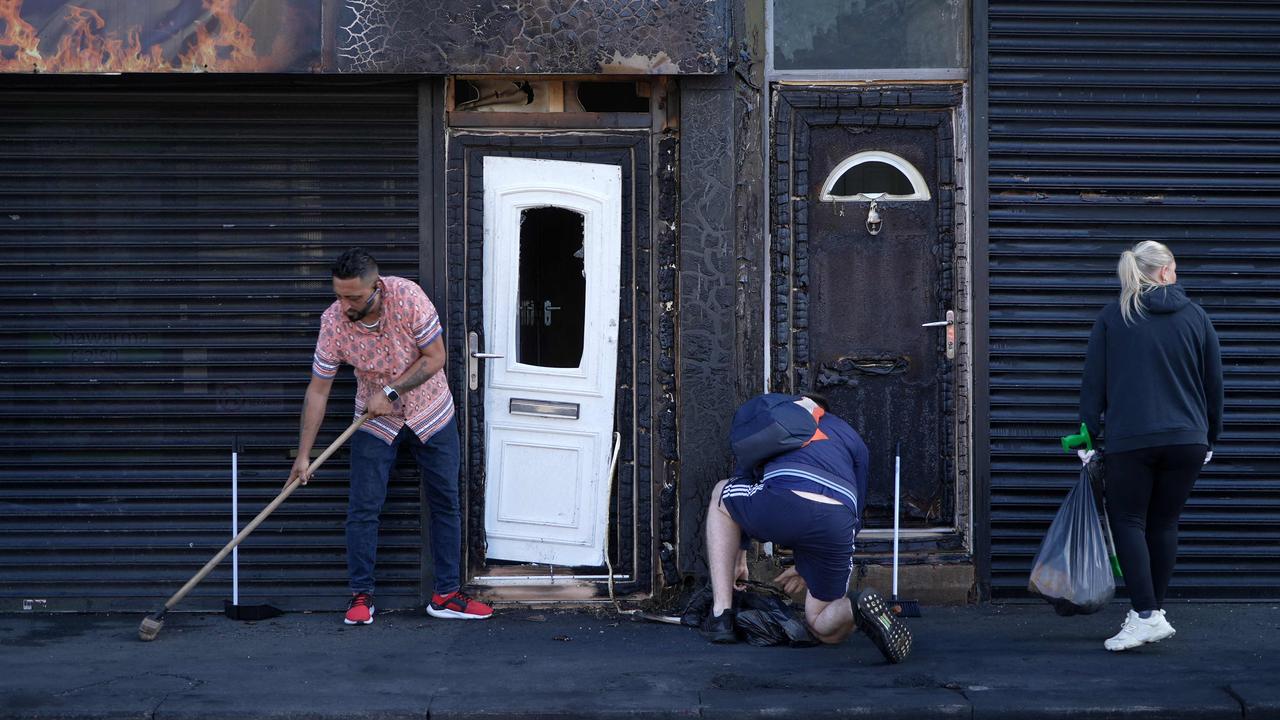
WHAT IS TWO-TIER POLICING?
The term two-tier policing has been used in the media coverage of the current outbreak of riots in Great Britain. It refers to police dealing with some protests – and by extension some protesters – more harshly than others.
UK Prime Minister Keir Starmer has denied claims that these riots have been dealt with more severely than others.
WHAT ARE SOME OF THE UK’S BIGGEST PAST RIOTS?
England Riots 2011 – When Black British man Mark Duggan was shot dead by police in London, peaceful protests became violent and escalated* into days of rioting across London and other major cities in the UK.
Poll Tax Riots 1990 – When then British Prime Minister Margaret Thatcher introduced a Poll Tax* on all properties, 200,000 angry protesters flooded Trafalgar Square in London.
The protests turned into a violent riot resulting in 300 arrests.
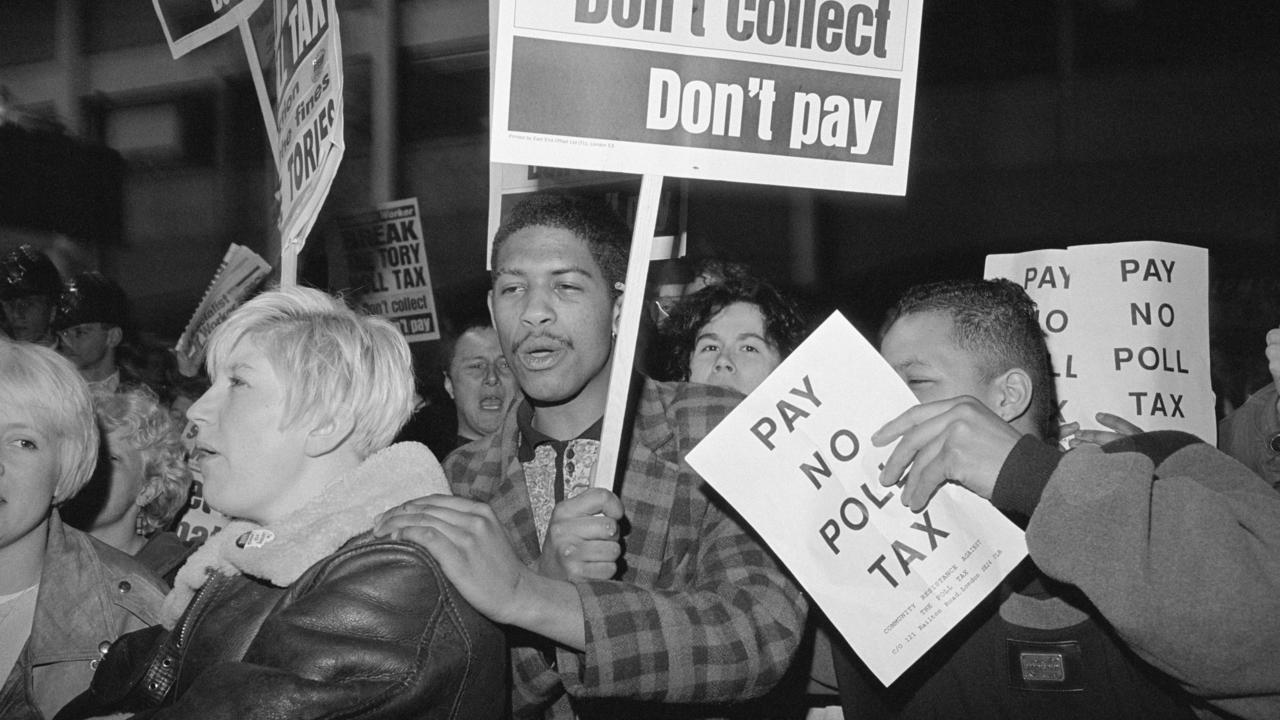
The Tottenham and Brixton Riots 1985 – These two race riots* occurred as a result of separate police operations in which two Black women died.
The Brixton Riots 1981 – Four years earlier, Brixton had erupted into riots following several incidents where Black people lost their lives during a time when the treatment of Black people by the city’s mostly white police force came under scrutiny.
The Race Riots 1919 – Following WWI, racial tension erupted in the port cities of Cardiff and Liverpool as many Brits blamed racial minority groups for the lack of available jobs.
PEACEFUL COUNTER PROTESTS AND DE-ESCALATION
Sometimes, counter-protests* are born from those who disagree with the violent and reckless actions of rioters.
After seeing the devastation caused by the week of riots, thousands of protesters took to the streets in the English cities of Liverpool and London on Wednesday local time in peaceful demonstration.
The counter-protesters held signs saying “Stand up to racism” and “Refugees* welcome” to show that they disagreed with the anti-immigration riots occurring across the UK.
The news came as the riots started to die down, with several that had been planned not
coming to fruition.
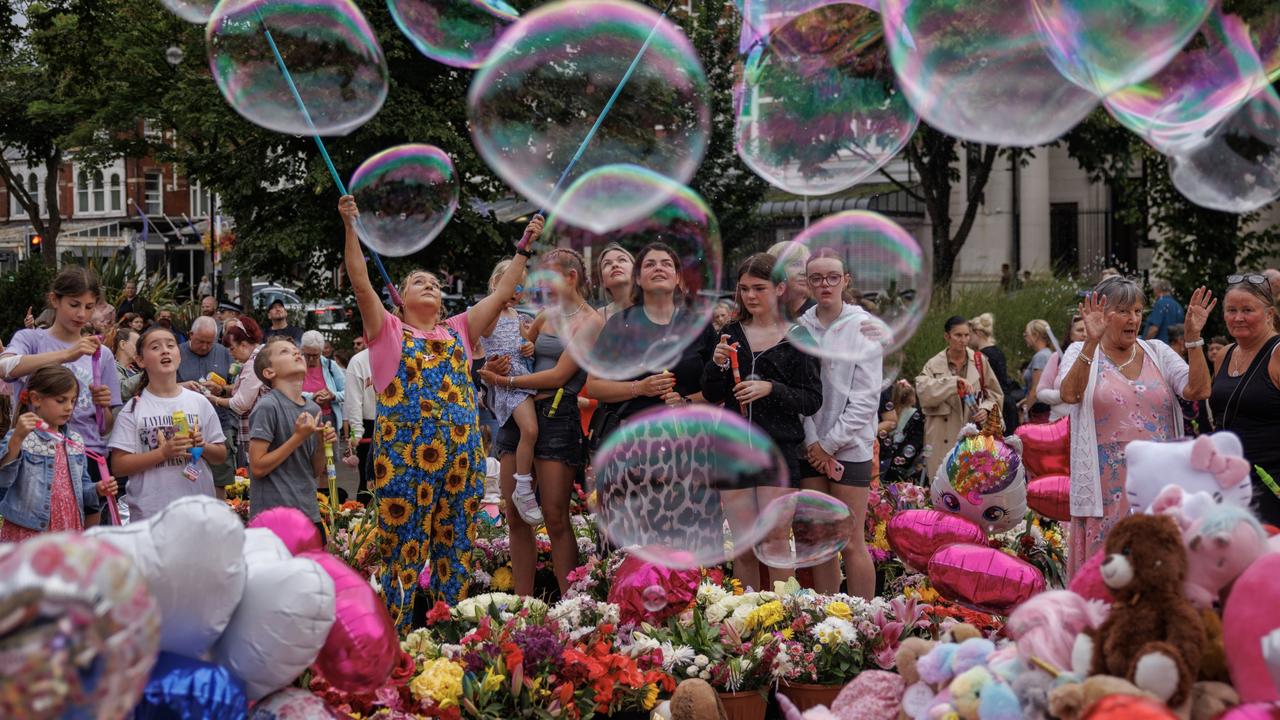
RIOTS IN AUSTRALIA
Australia has also seen its fair share of riots over the years. Here are two of the most recent.
Melbourne Anti-lockdown protests 2021 – After a string of lockdowns* across Melbourne in response to the Covid-19 pandemic, thousands of angry workers marched through the city before standing off against police at the Shrine of Remembrance. The riots started as a protest against the closure of construction sites, but the workers were also joined by other groups, including those opposed to vaccine mandates* and lockdowns. More than 200 people were arrested after throwing items at police.
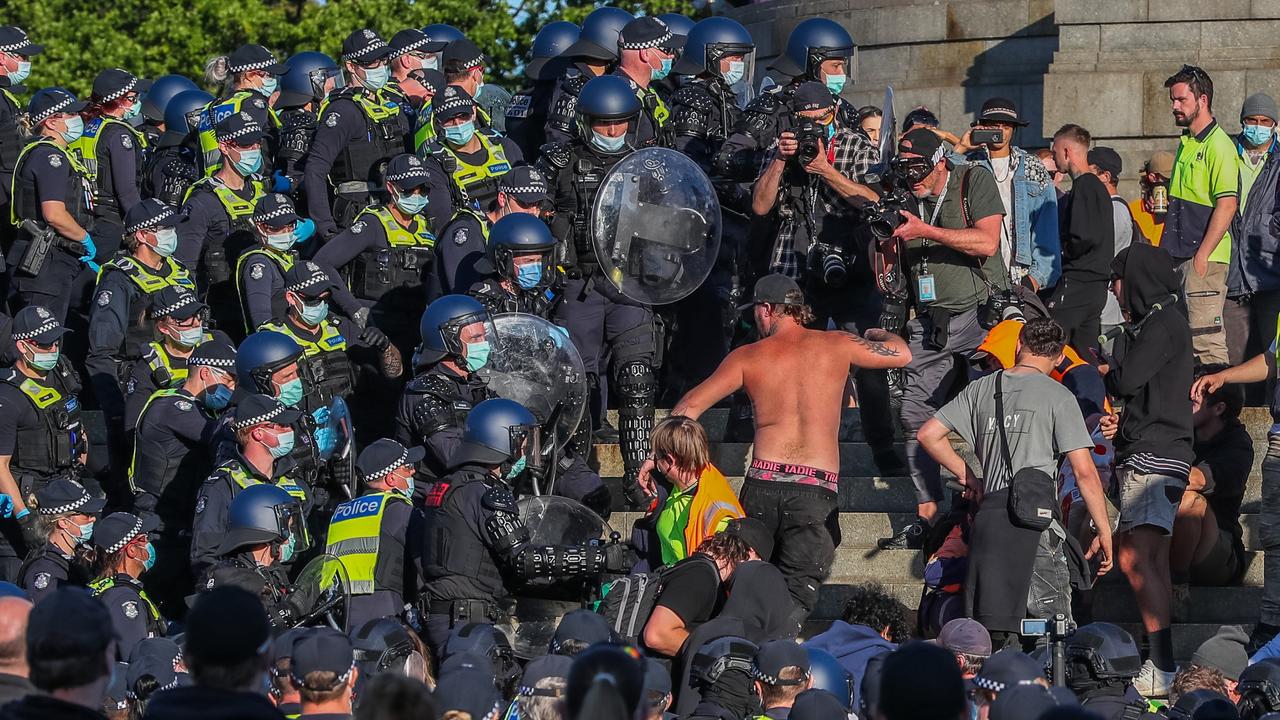
Cronulla Race Riots 2005 – A crowd of more than 5000 mostly Anglo-Australians* gathered at Cronulla Beach in Sydney’s south to “reclaim the beach” from people of other ethnicities*. The crowd quickly turned violent and started attacking people who looked Middle Eastern, leading to 104 people being arrested.

POLL
GLOSSARY
- National Guard: in the US, this state military force is available to serve in state and federal emergencies
- rescinded: removed, taken back, taken away, making a law, order, or decision no longer have any legal effect
- en masse: all together and at the same time, in large numbers
- ICE: Immigration and Customs Enforcement
- warrants: official documents allowing someone to do something, for example allowing a police officer to search someone's home
- projectiles: objects that are thrown or shot forwards with force
- arson: the crime of intentionally starting a fire in order to damage or destroy something
- acquitted: officially decided in a court of law that someone was not guilty of a particular crime
- asylum seekers: a person who has left their home country as a refugee in order to seek protection and safety in another country
- disenfranchised: someone who has had their rights taken away from them
- disaffected: unhappy with the way things are being run by authorities
- aggravated: making a bad situation worse
- trigger event: an event that sparks strong reactions and leads to people taking action
- escalated: got worse or stronger
- misinformation: information that isn’t true
- Poll Tax: a tax that every adult has to pay, regardless of their income or level of wealth
- race riots: riots caused by racial anger
- counter-protests: people protesting against another group of protesters
- refugees: people who have fled their country through war or persecution
- lockdowns: when people are ordered to stay at home, like during the Covid-19 pandemic
- vaccine mandates: rules that require people to get vaccinated
- Anglo-Australians: Australians of a white, Anglo-Saxon or Anglo-Celtic ancestry
- ethnicities: the cultural or national backgrounds of people
EXTRA READING
Assassination attempt echoes America’s past
Julian Assange granted freedom
Reconciliation after the Voice vote
QUICK QUIZ
1. What is a riot?
2. What factors are often responsible for riots starting?
3. How does misinformation play a part in causing riots?
4. What led to the 2011 England Riots?
5. What caused the 1919 Race Riots?
LISTEN TO THE UPDATE
LISTEN TO THIS STORY
CLASSROOM ACTIVITIES
1. What can help?
Create a poster or online advertisement. Your purpose is to help people learn about misinformation online and how to avoid it.
Time: allow at least 40 minutes to complete this activity
Curriculum Links: English, Visual Communication Design, Social and Personal Capability
2. Extension
Why do you think it’s important to learn about events like the riots in the UK? How can understanding these events help us in the future? Write paragraphs explaining your opinion on these questions.
Time: allow at least 45 minutes to complete this activity
Curriculum Links: English, Personal and Social Capability, Civics and Citizenship
VCOP ACTIVITY
Wow word recycle
There are plenty of wow words (ambitious pieces of vocabulary) being used in the article. Some are in the glossary, but there might be extra ones from the article that you think are exceptional as well.
Identify all the words in the article that you think are not common words, and particularly good choices for the writer to have chosen.
Select three words you have highlighted to recycle into your own sentences.
If any of the words you identified are not in the glossary, write up your own glossary for them.
Extension
Find a bland sentence from the article to up-level. Can you add more detail and description? Can you replace any base words with more specific synonyms?
Down-level for a younger audience. Find a sentence in the article that is high level. Now rewrite it for a younger audience so they can understand the words without using the glossary.

